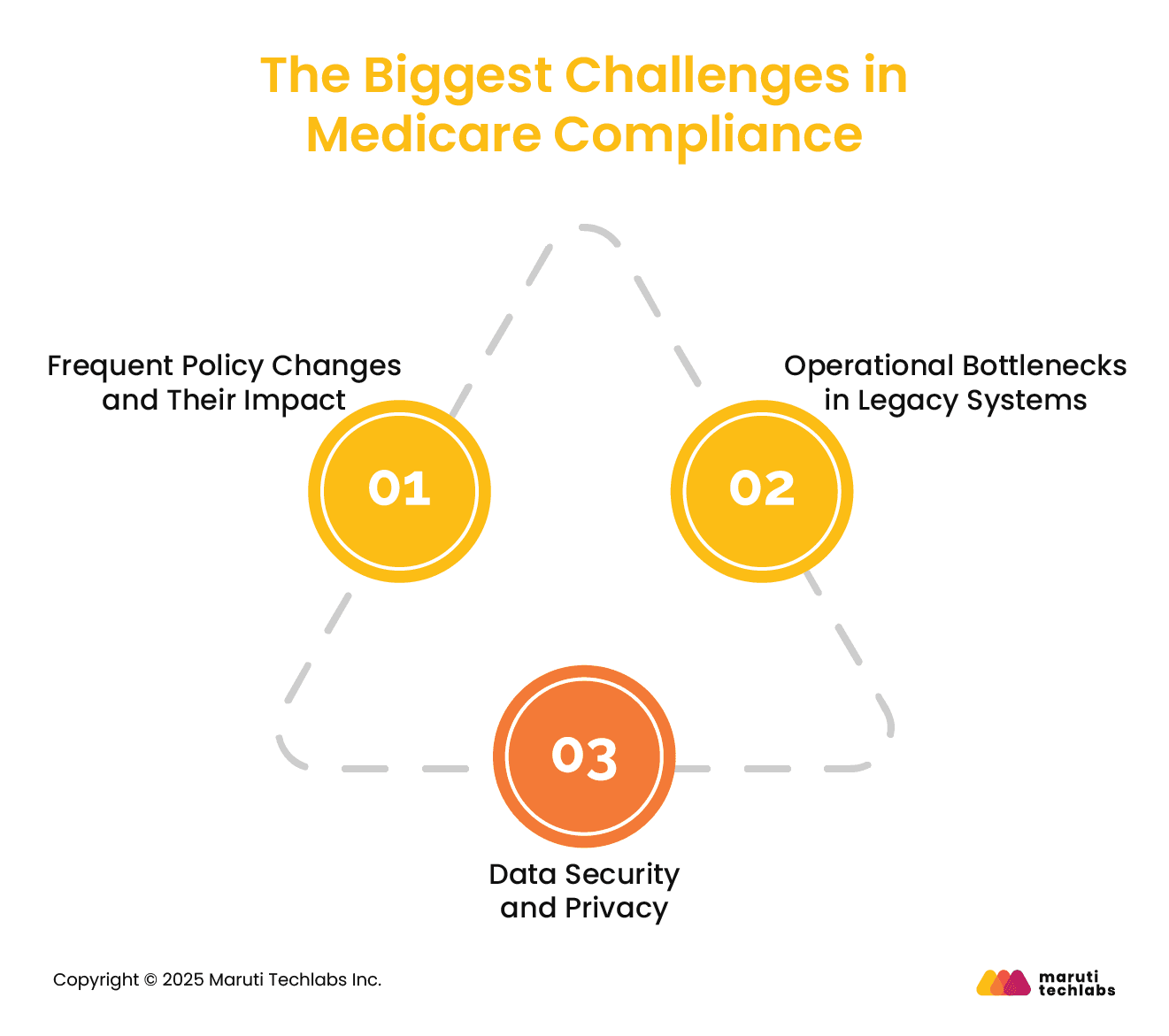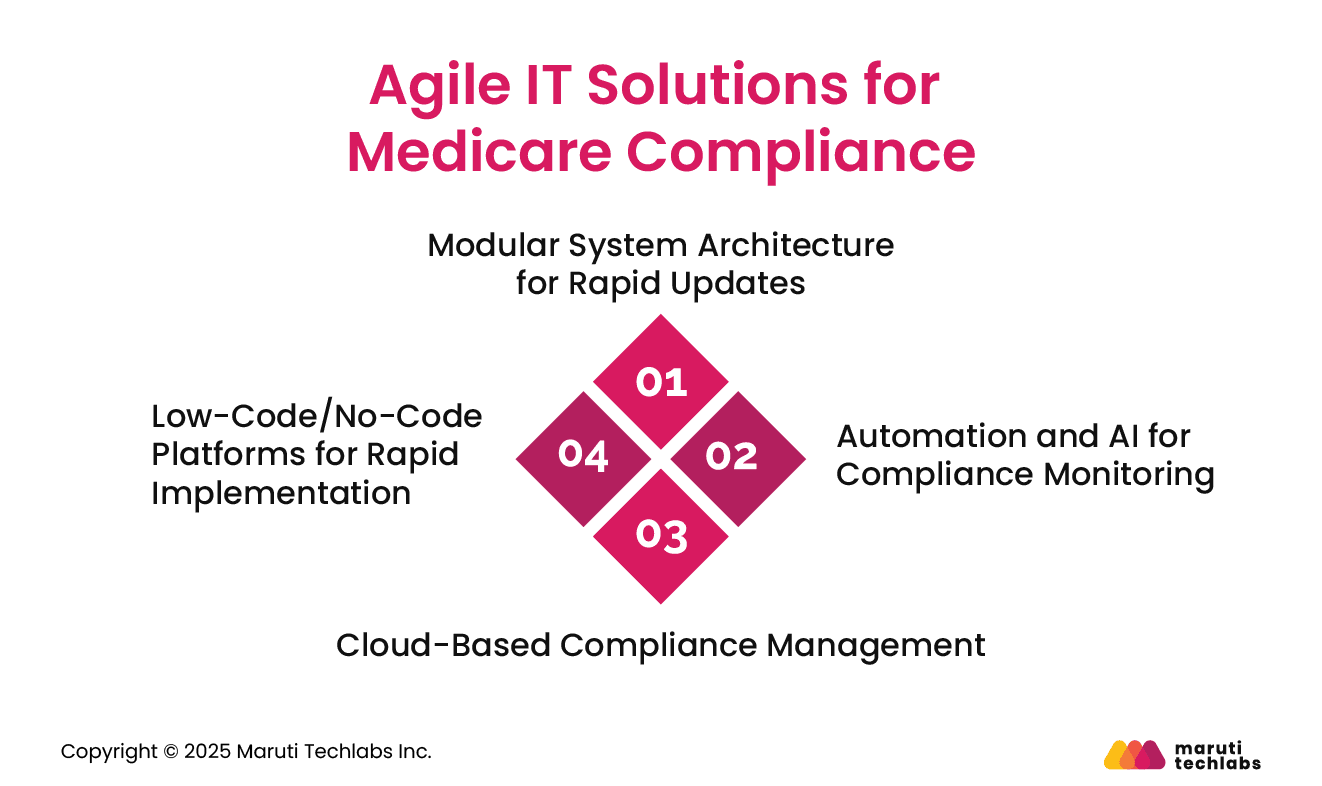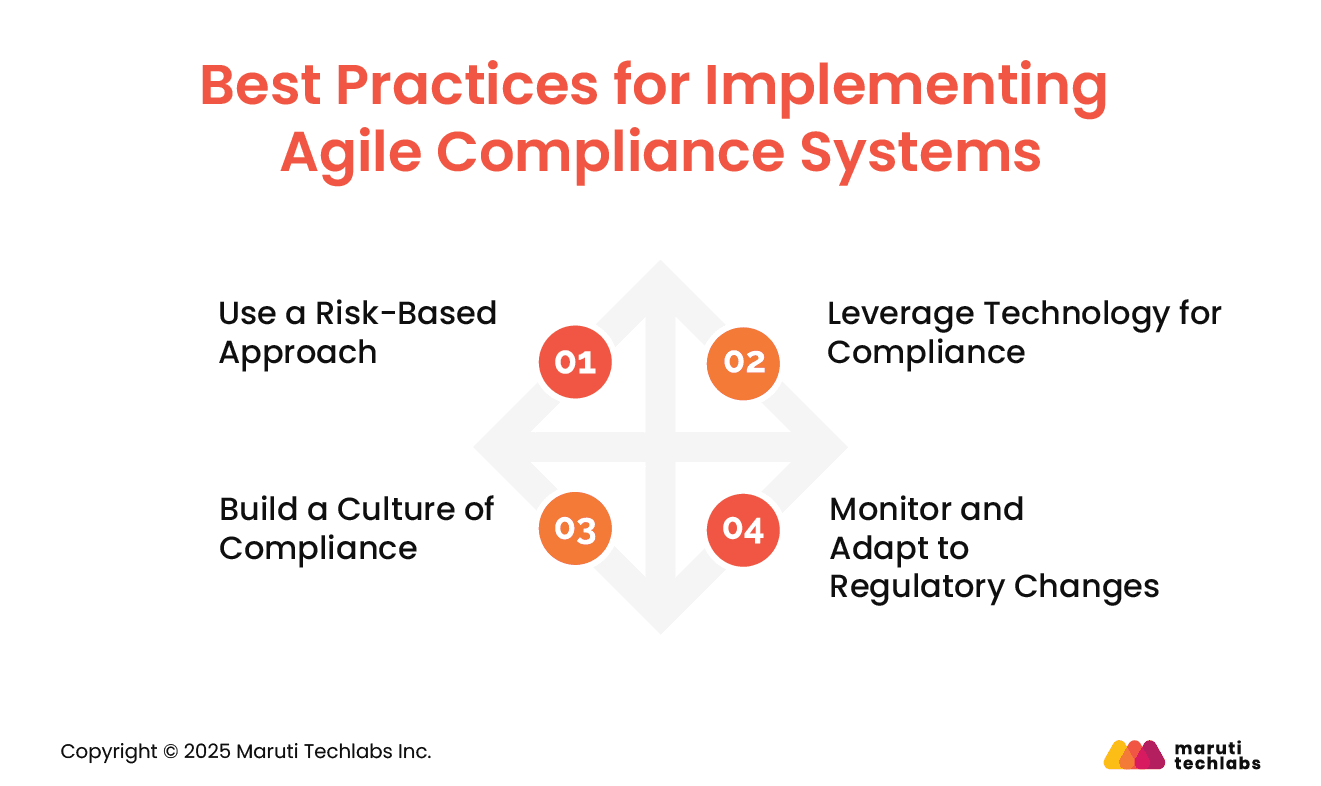

Medicare Compliance Made Easy with Agile IT Systems






Medicare regulations constantly evolve, affecting insurance providers and healthcare organizations. In 2023, healthcare spending in the U.S. was $4.9 trillion, making up 17.6% of the country’s GDP and about $14,570 per person. As costs increase, Medicare Advantage, Medigap, and reimbursement rules keep changing, making it hard to stay compliant.
A lot of organizations still use legacy systems that can’t keep up with these fast changes. Updating them takes a lot of time which costs more money and often leads to mistakes. Agile IT systems solve this problem. That’s where agile IT systems come in. They help automate regulatory updates, streamline data handling, and ensure compliance without disrupting daily operations. With the right technology, healthcare providers can stay ahead of shifting Medicare rules, avoid penalties, and focus on delivering quality care.
Following Medicare rules is not easy. The rules keep changing, and old systems struggle to keep up. This can cause financial problems and make work harder while creating security risks for healthcare providers and insurers. Some major challenges they face are:

Medicare rules keep changing. Recent updates, such as changes to Medicare Advantage and payment rates, mean organizations must adapt fast. A good example is telehealth during COVID-19 when providers had to change policies and billing quickly.
However, slow IT system updates can lead to compliance risks. If an insurer's system is not updated on time, claims might be handled incorrectly, leading to denied payments or even fines. Delayed adjustments can also mean pricing inconsistencies, lost revenue, and more administrative work to correct errors.
Many healthcare organizations still rely on outdated IT systems that weren't designed to handle frequent regulatory changes. Updating these systems is often slow and costly, leading to claims processing and policy management errors.
Tracking compliance manually is another big challenge. When systems don't update independently, staff must spend extra time changing policies, training employees, and keeping up with new rules. This takes time and effort away from patient care.
Maintaining legacy systems is also expensive. Organizations need IT experts to fix old software, but temporary fixes don't always stop delays. The longer a company uses an outdated system, the more complex and expensive compliance becomes.
Healthcare organizations handle vast amounts of sensitive patient data. Regulations like HIPAA and CMS require strict data protection, but legacy systems often lack modern security features. This increases the risk of cyberattacks and data breaches.
The challenge intensifies when legacy systems require rapid updates. Integrating new security measures into outdated infrastructure is often complex and unreliable. If healthcare providers fail to secure patient data effectively, they face legal consequences, financial loss, and a severe erosion of patient trust.
Medicare rules change fast, and legacy tech and manual processes make it hard for healthcare organizations to keep up. Investing in agile, secure, and automated systems isn't just about following regulations—it's about staying efficient, protecting data, and providing better patient care.
As discussed earlier, medicare regulations constantly change, and healthcare organizations must keep up to avoid compliance issues. Outdated IT systems make this difficult, leading to errors, delays, and financial penalties. Agile IT solutions offer a way forward by providing flexibility, automation, and real-time updates. Here's how modern technology helps organizations stay compliant.

Old systems struggle to keep up with Medicare's constant changes. A modular system breaks everything into smaller, separate parts (microservices) that work together, making updates easier. Instead of fixing the whole system, organizations can update only what's needed. For example, if Medicare changes payment rates, insurers can adjust payment rules without messing up other parts of the system. This helps avoid mistakes and keeps things running without delays.
Maintaining Medicare regulations manually takes a lot of time and can lead to mistakes. AI-powered automation makes this easier by tracking regulation changes and recommending necessary updates. Machine learning models can track changes in Medicare Advantage, Medigap, and reimbursement policies, flagging areas that need immediate attention.
AI-driven compliance audits further reduce risks by identifying claims processing, billing, and patient record inconsistencies. This reduces the burden on compliance teams and ensures regulatory requirements are met without manual intervention.
Cloud technology helps healthcare organizations comply with Medicare rules. Cloud systems update in real time, so policy changes happen instantly. This is helpful for insurers and healthcare providers handling large amounts of patient data.
Cloud-based policy management systems help organizations grow while staying compliant. These systems update themselves when rules change, so staff don’t have to make constant manual fixes. They also keep sensitive data safe with strong security measures like encryption and restricted access, making it much harder for hackers to get in.
Healthcare organizations often need IT teams to update compliance rules, which can take time. Low-code and no-code platforms let business teams make these changes on their own. With simple, easy-to-use tools, they can update workflows, adjust policies, and add new rules without needing technical skills.
For example, when Medicare introduces a new billing rule, a compliance officer can quickly make the necessary updates in the system with just a few clicks. They don't have to wait for the IT team to step in, which can often take time. This allows organizations to apply changes faster, keeping operations smooth and avoiding unnecessary delays.
Agile IT solutions make it easier for healthcare organizations to follow Medicare rules without delays or risks. Modular systems, automation, cloud technology, and low-code platforms help them keep up with changes. These tools improve compliance, speed up work, keep data safe, and reduce costs. Healthcare organizations must invest in agile IT solutions to prepare for the future.
Following best practices helps organizations set up agile compliance solutions smoothly and without trouble. It saves time, reduces mistakes and keeps everything running well. Here are some critical steps companies can follow to make the process easier and more effective.

Not all compliance risks are the same. Some pose bigger threats than others. A risk-based approach helps organizations focus on the most critical risks first.
By focusing on the biggest risks, organizations can allocate resources more effectively and avoid compliance challenges.
Technology makes compliance easier. Automated tools track rule changes and alert organizations. AI reduces mistakes in claims and billing. Cloud systems provide real-time updates, so organizations stay updated with the latest regulations.
Using the right technology simplifies compliance management and helps organizations avoid penalties.
Compliance isn’t just an IT or legal issue—it should be part of the organization’s culture. Cross-functional teams should work together to ensure compliance is built into everyday processes.
When compliance becomes a shared responsibility, organizations can reduce risks and improve efficiency.
Regulations are constantly evolving, so organizations must stay alert. Here are some ways to keep up:
By staying proactive, organizations can quickly adapt to new rules and maintain compliance without major disruptions.
Agile IT solutions help healthcare providers and insurers follow Medicare rules, avoid penalties, and reduce manual work. AI tracks changes, blockchain secures data, and analytics helps plan. In the coming years, Agile practices will become the norm in healthcare.
Healthcare organizations will increasingly adopt AI tools, prioritize value-based care, and embed security into workflows. Telehealth, personalized medicine, and patient data management will advance through Agile-driven innovation.
Switching to Agile compliance systems isn’t just about following rules—it’s about staying ahead, reducing risks, and improving patient care. To make this transition smooth, organizations need the right technology and expertise. Explore how Maruti Techlabs' Digital Transformation services can help you stay compliant and future-ready. Contact us to learn more.
The following are the ways to report a Medicare Compliance Issue:
Agile makes compliance easier by focusing on teamwork, transparency, and adaptability. Compliance officers, project managers, and developers work together to ensure regulations are met throughout the project.
This approach helps organizations quickly adjust to rule changes, avoid delays, and reduce compliance risks. By integrating compliance into daily workflows, teams can address issues early and maintain regulatory standards without slowing down operations.
Automation simplifies compliance by handling repetitive tasks like data entry, report generation, and audits. This reduces human errors, ensures accuracy, and saves time. Automated systems also track regulation updates and alert teams to potential risks, making compliance a continuous process.
By reducing manual work, businesses can focus on strategy while staying compliant, avoiding penalties, and improving overall efficiency in managing regulatory requirements.
Cloud-based solutions make compliance easier by providing secure access to patient data anytime, improving transparency and engagement. They help healthcare providers share information seamlessly, reducing duplicate tests and improving coordination.
Cloud systems also support real-time monitoring, ensuring accurate records and reducing medical errors. By automating compliance processes, organizations can maintain security, meet regulations, and provide better care without administrative burdens.


